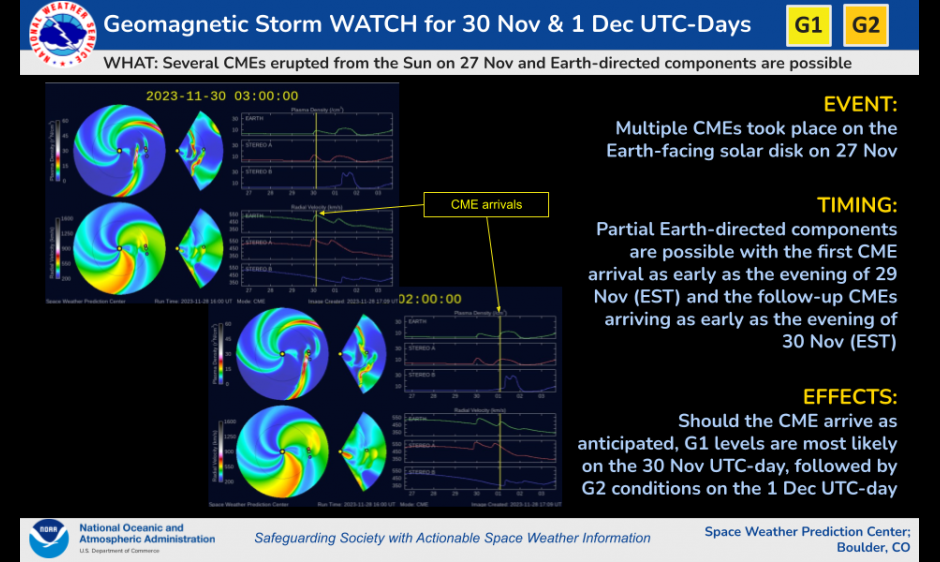
Multiple coronal mass ejections (CMEs) occurred from the Sun on 27 November, 2023. Three of these CMEs appear to have Earth-directed components with the first arrival as a potential glancing blow or near-Earth proximity passage beginning as early as late on 29 Nov EST (early 30 Nov UTC). The later CMEs are anticipated to arrive at Earth near the end of 30 Nov EST (early 1 Dec UTC) as at least glancing blows. Analysis and model results suggest G1 levels are probable on the 30 Nov UTC-day in response to any initial CME influences, followed by G2 levels on the 1 Dec UTC-day as the additional CMEs arrive. Continue to follow our webpage for the latest forecasts and updates.